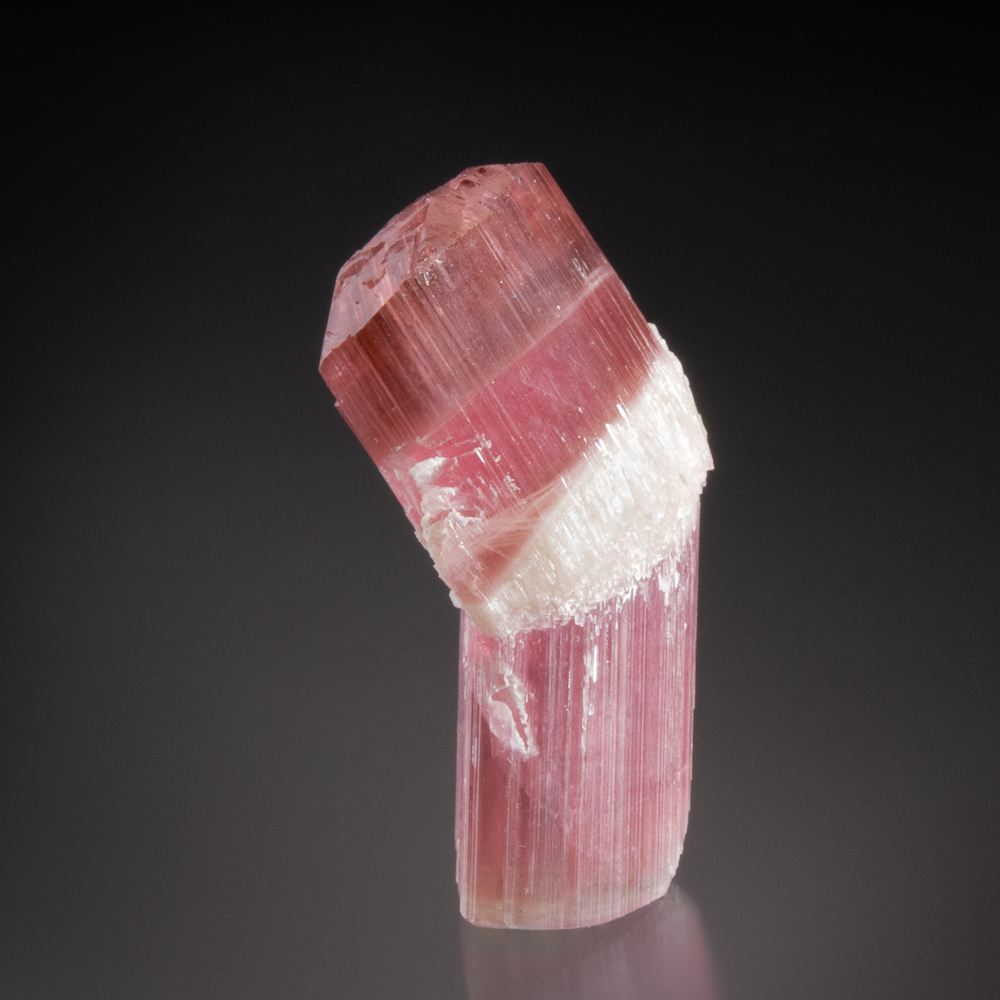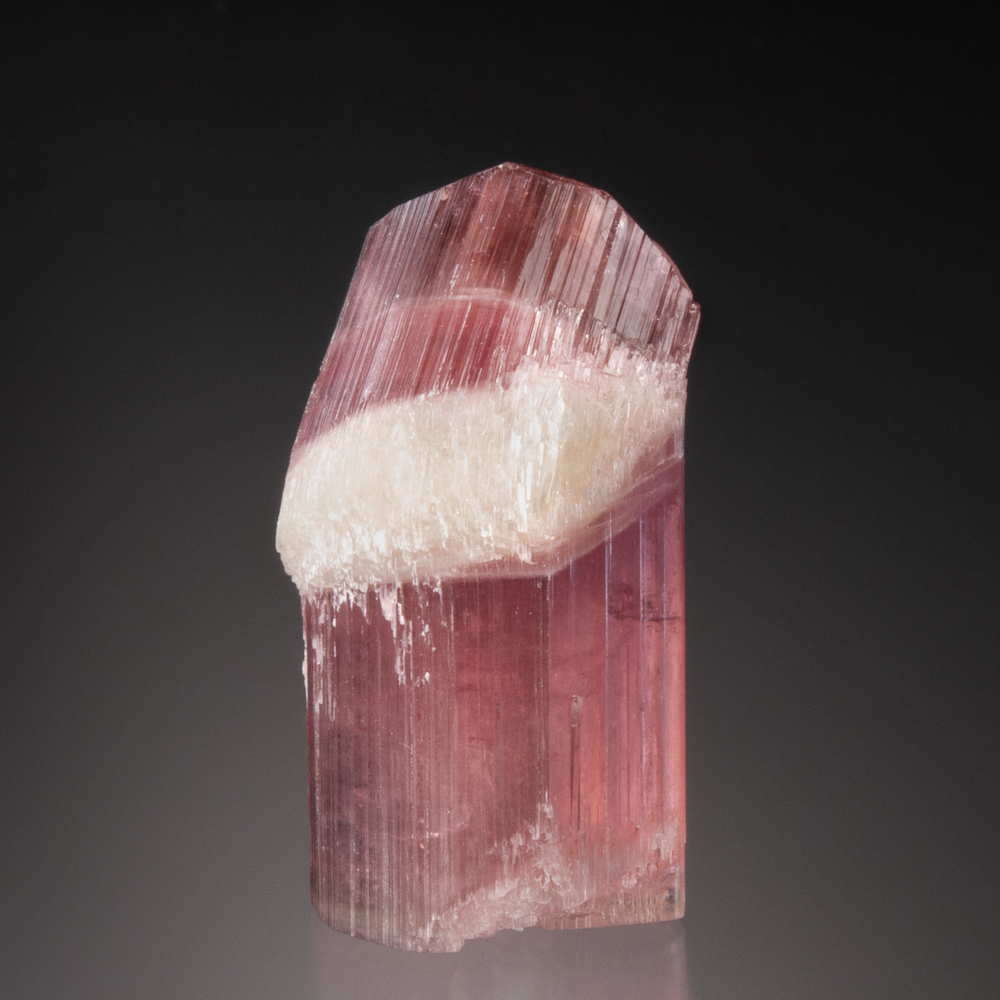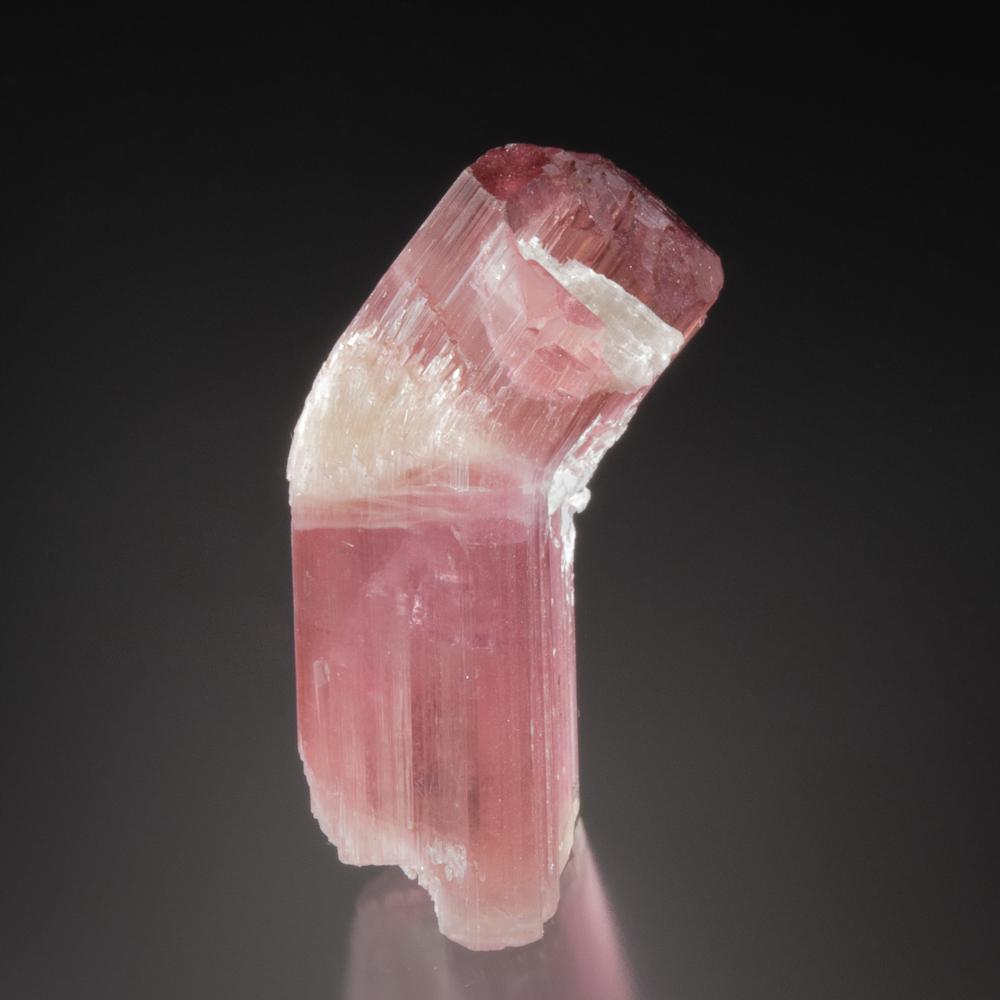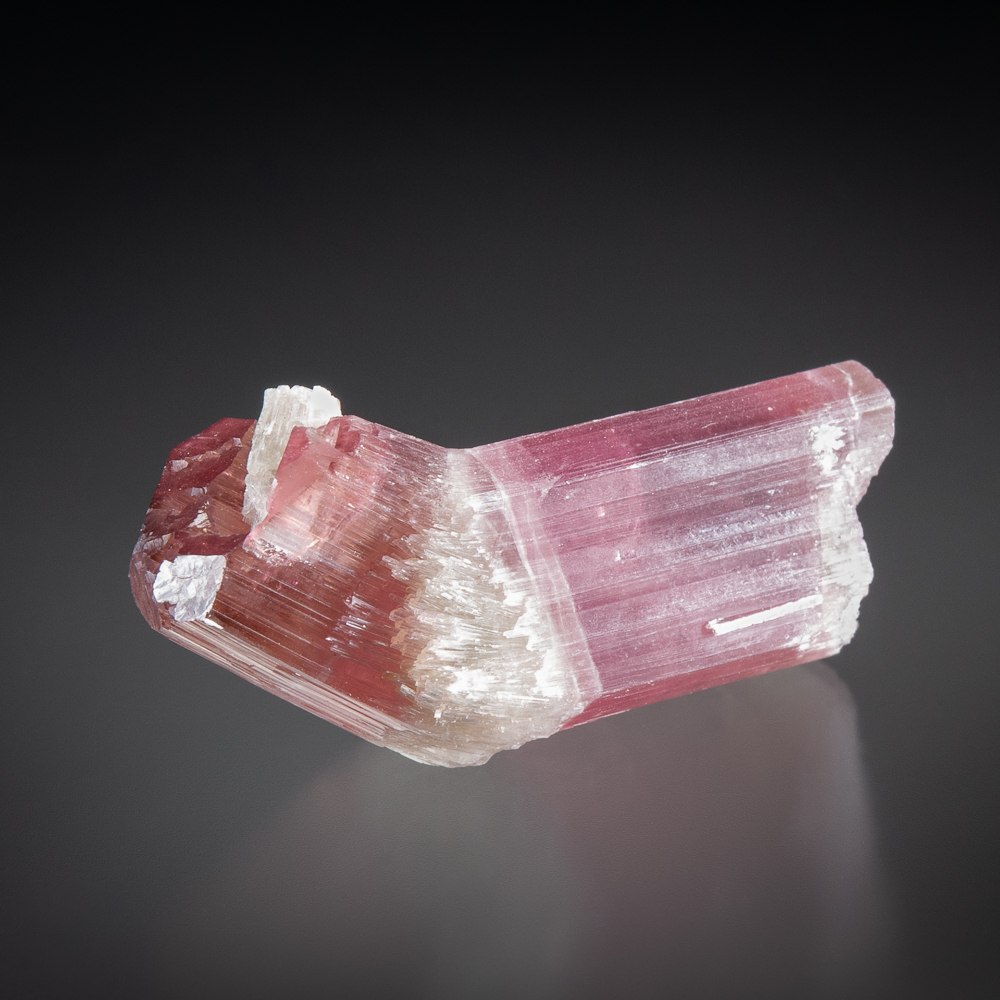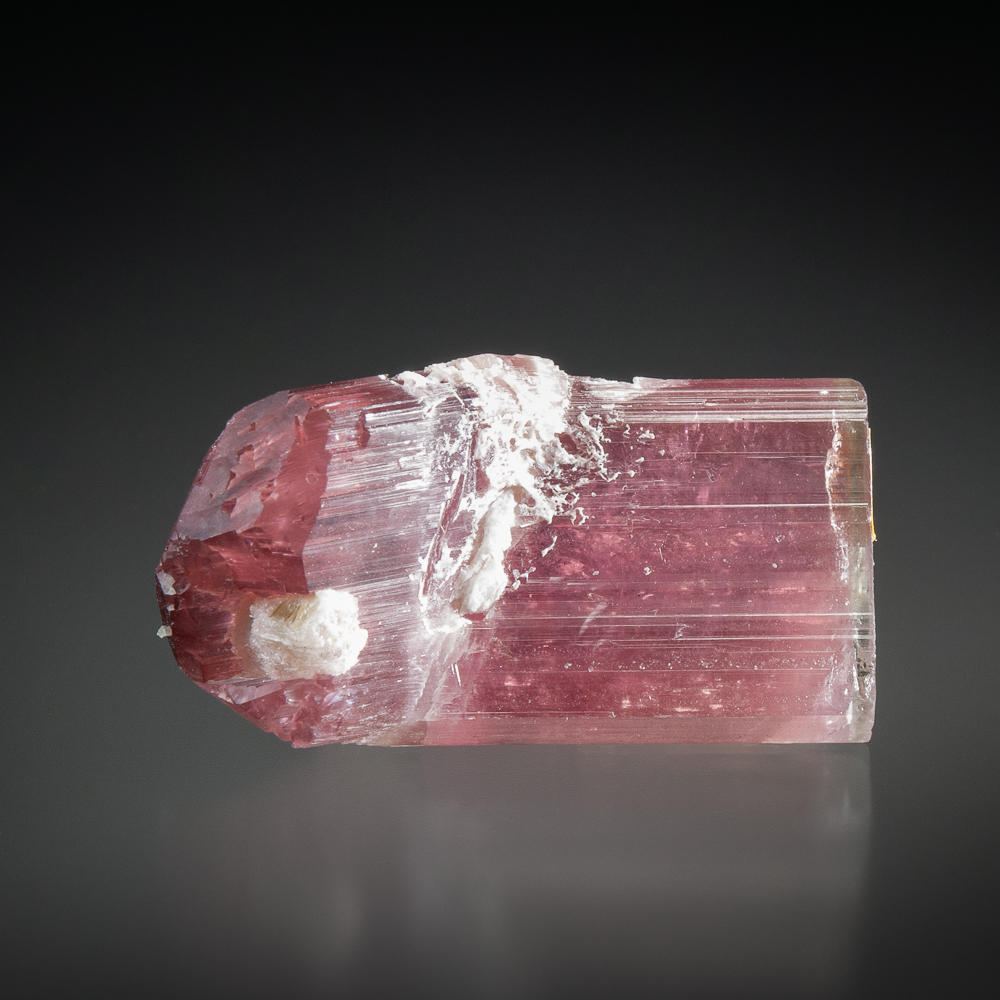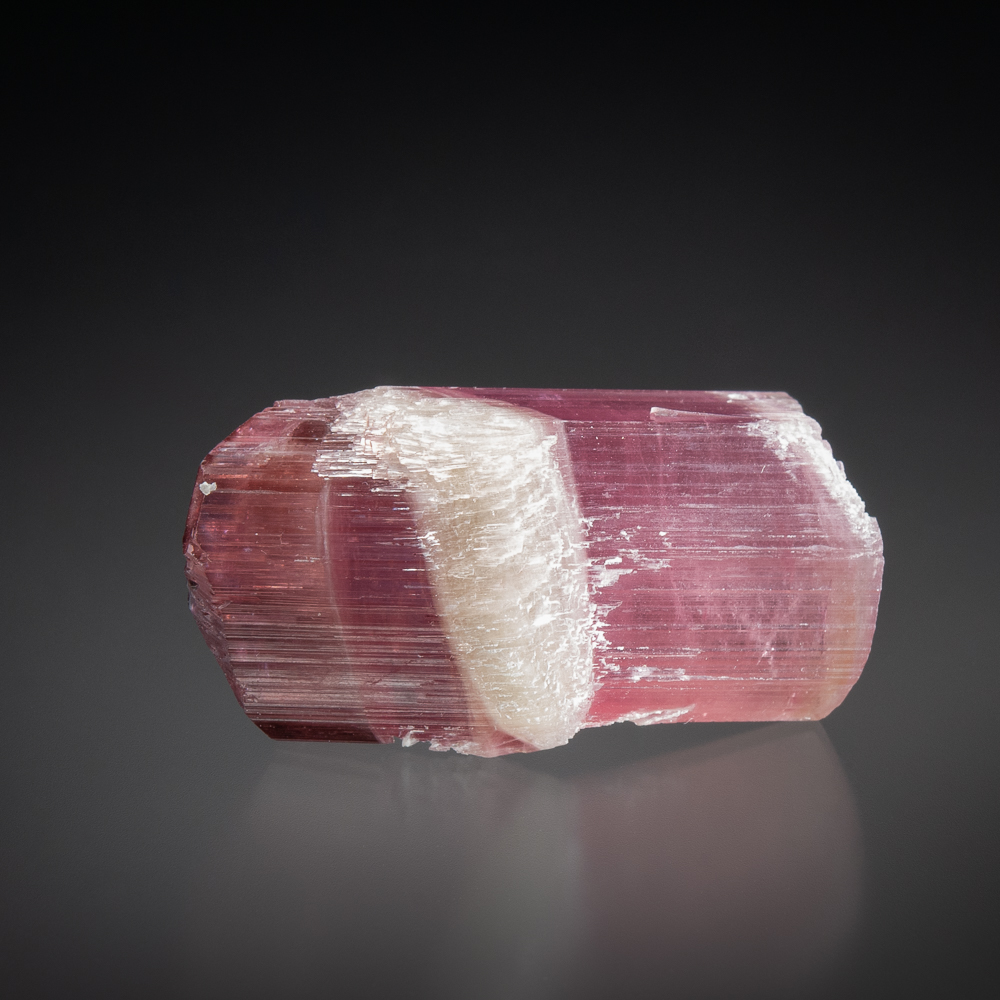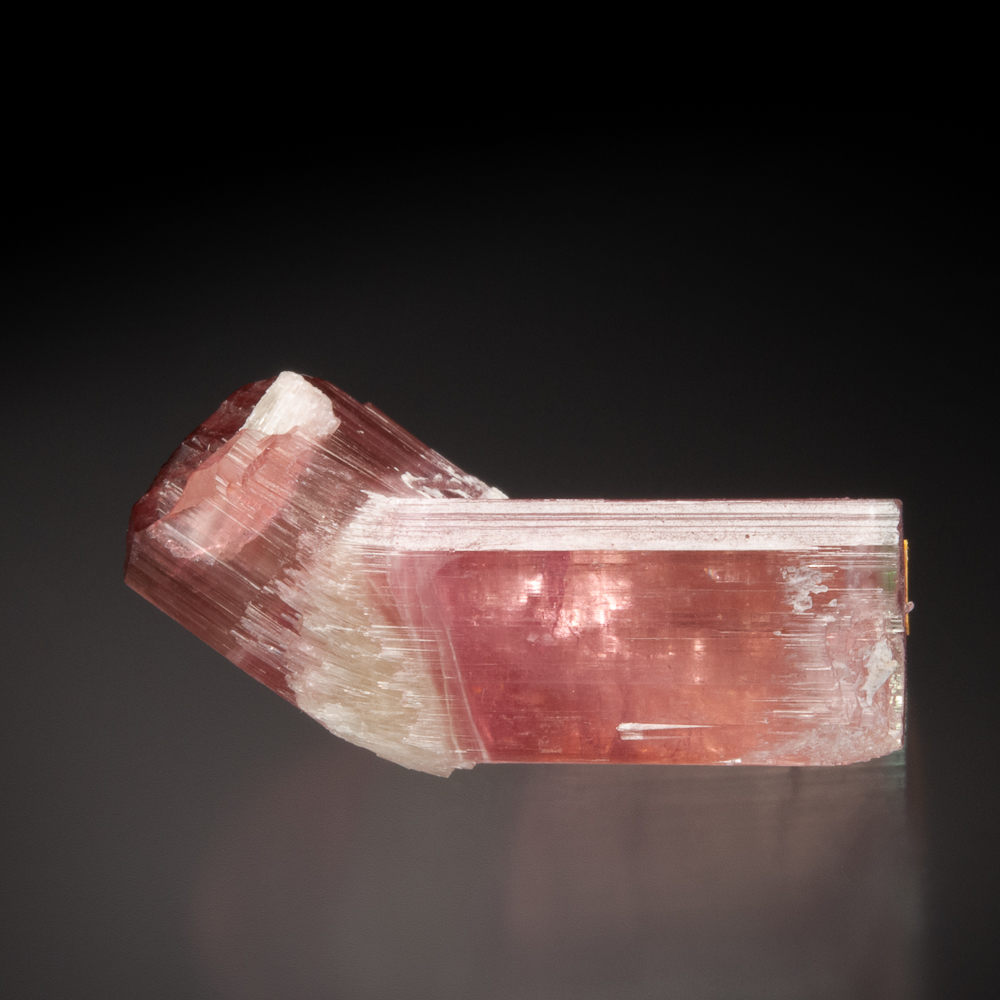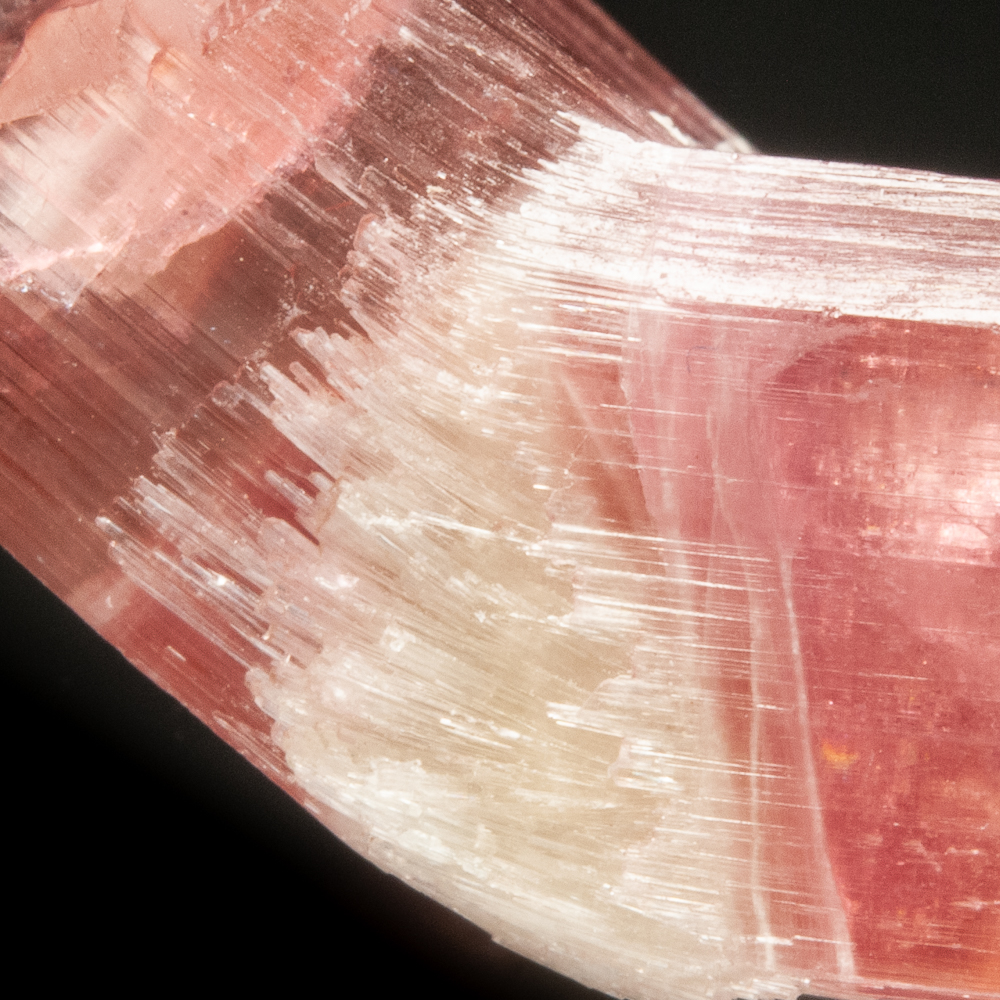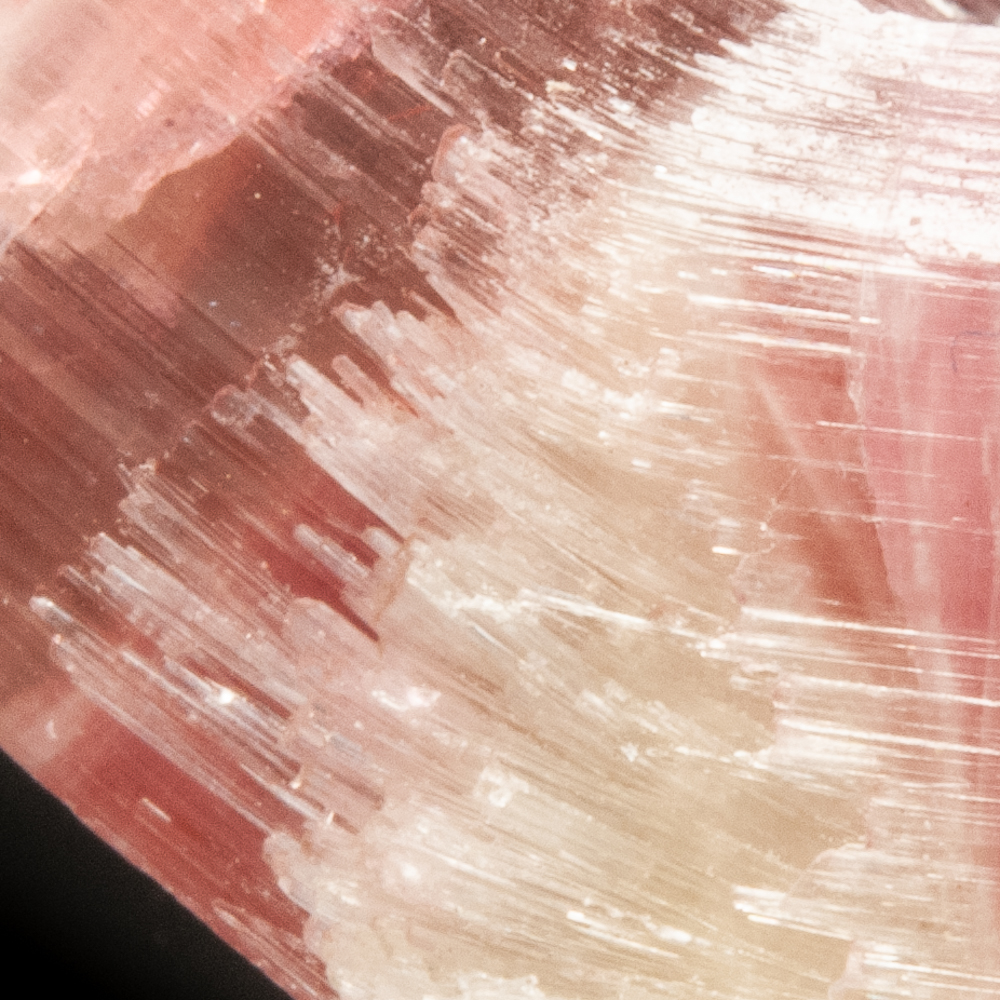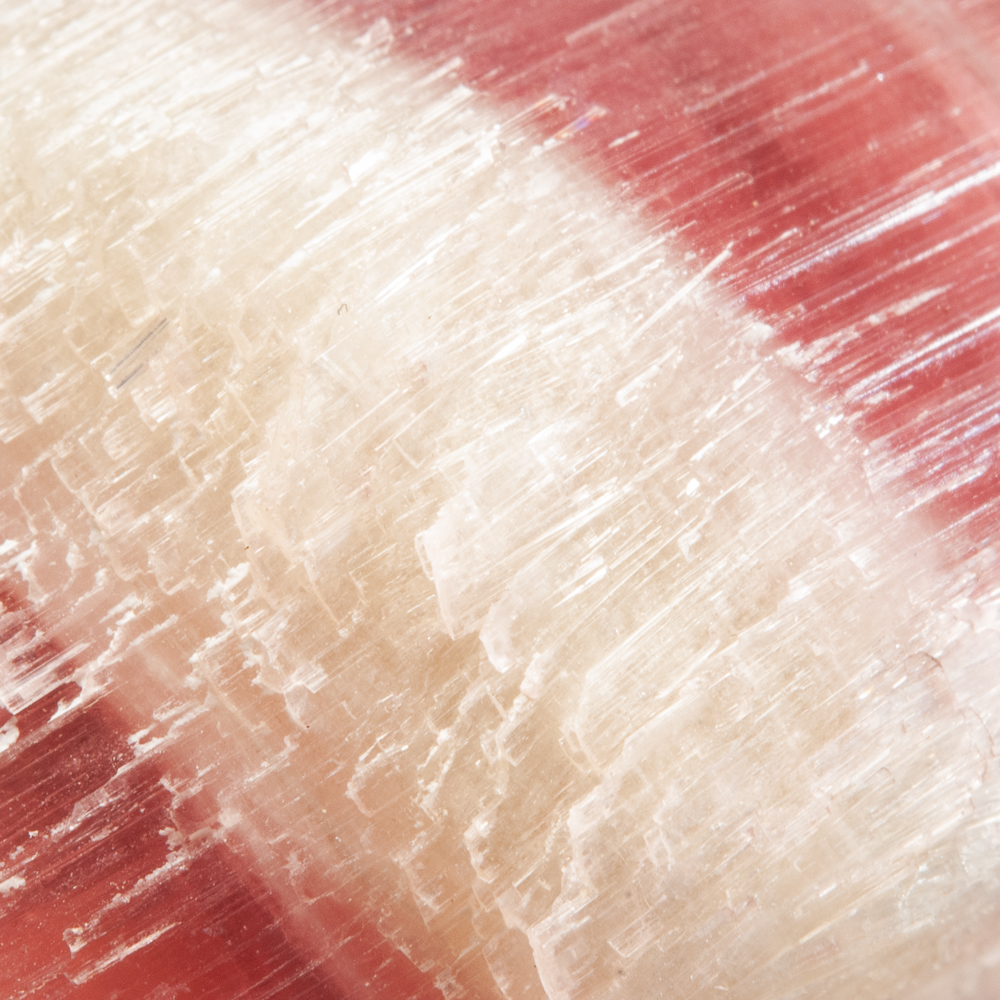Description
A wonderful curved crystal of elbaite, variety rubellite, from the Himalaya Mine. This sharp, lustrous crystal is a doubly-terminated “floater”, complete around 360 degrees. As one sees with Himalaya tourmalines, it exhibits hemimorphic crystal growth, where the crystal forms of each termination are different – in this case pyramidal at the top (with a deeper pink-maroon colour) and flat at the bottom (where there is a very thin green zone).
The most spectacular feature of this piece is its pronounced curvature. On one side of the crystal and part of another, the curvature is relatively smooth and untextured. However, on other prism sides, one can see a much more detailed record in the crystal of the event that led to its final appearance. As the crystal was bent during crystal growth, the gap was bridged by the growth of a multitude of tiny elbaite crystals. While some of these tiny crystals are essentially flush with the main pink crystal, one can easily see many tiny terminations among them, with magnification. The tiny crystals appear essentially colourless, although I believe there is an incredibly faint green hue, at least in some places.
In excellent condition, one very tiny chip along an edge joining a pyramidal and prism face.
From the Tracy Kimmel collection, with some more history. It was originally in the Hubert C. De Monmonier collection (an article about him and his collection is in The Mineralogical Record 39:5 (Sept/Oct 2008), 397-405). De Monmonier built a collection of 871 superb mineral specimens over his lifetime and he bequeathed it to the University of Arizona (at that time it was valued at over USD 7 million). Of the 871 specimens, 146 were tourmalines, and he closely followed the production of interesting tourmalines from the Himalaya Mine. Ultimately, some of his specimens were sold by the U of A to establish an endowment fund for the museum, and this is how this great specimen became available to Tracy. The labels from the U of A and Arkenstone accompany the specimen. It’s a super piece.
About Tracy Kimmel (click here)

